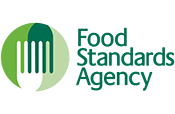Food packaging
BPA in food packaging
Bisphenol-A or BPA, is a chemical used to make plastics. This includes materials that come into contact with food such as refillable drinks bottles and food storage containers.
BPA is also contained within the resins used to coat the insides of some food cans. This coating allows producers to heat canned food to kill off bacteria without the metal in the can contaminating the food contents.
Endocrine disrupters
BPA is one of a large number of substances that may be able to interact with human hormone systems. These substances are called 'endocrine disrupters'.
There is evidence that some wildlife species are affected by endocrine disrupters. Research is still going on to establish whether BPA has this effect in humans. Results so far show the body metabolises it and removes it as waste.
Rules for using BPA in food packaging
Materials and articles that come into contact with food must follow strict rules.
By law, materials that contain BPA must not:
- make food harmful
- change the nature, substance or quality of the food
BPA may be used in food contact materials, so long as no more than 0.05 milligrams per kilogram migrates into the food. Specific rules forbid migration of BPA from varnishes and coatings intended to be in contact with:
- infant formula
- baby foods
- products intended for young children
For more information, read the Food Standard's Agency (FSA) guidance on BPA in plastic.
The FSA's Food Contact Materials Team can also provide more information about the safety of BPA used in the food industry. You can contact them by email at foodcontactmaterial@gov.uk.
- Food Standards Agency Northern Ireland028 9041 7700
